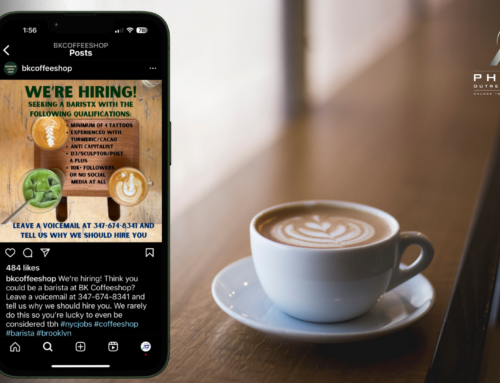Do you want to make your outreach more effective and impactful? Do you want to connect with diverse groups of people who need your services? If so, you need to tailor your content to each audience segment you are trying to reach.
In workforce development, one truth remains constant: there is no one-size-fits-all approach to promoting your services. The key to effective outreach lies in understanding the diverse audience you aim to reach, recognizing their unique needs, and crafting content that creates value for each group.
Let’s explore how:
The Importance of Audience Identification
Workforce development organizations cater to a wide range of audiences, from the youth seeking career exploration opportunities to employers scouting for skilled talent, incumbent workers looking to upskill, and unemployed individuals seeking a path to reemployment. Additionally, community partners play a crucial role in fostering collaboration and support.
Identifying your intended audience segment among the many distinct groups within your outreach footprint, is the first step in tailoring your message. Each audience has its own set of challenges, aspirations, and preferred communication channels. By recognizing and appreciating these differences, you can develop strategies that resonate and make a lasting impact.
Crafting Content for Value Creation
Once the audience is identified, the next step is to craft content that delivers real value to each segment. For the youth, this might mean highlighting exciting career paths, success stories, and educational opportunities. Employers may be interested in case studies showcasing the impact of skilled workforce acquisition on business growth. Incumbent workers could benefit from content focusing on upskilling and career progression, while the unemployed may seek resources for retraining and job placement.
Strategy/Tactics Recommendations
Youth Engagement: Inspire and Educate:
- Career Path Spotlights: Create engaging and visually appealing content that showcases individuals who have pursued diverse and exciting career paths after participating in your workforce development programs. This could include video interviews, blog posts, and social media features.
- Success Stories: Share success stories of young individuals who have successfully navigated the transition from education to employment with the help of your organization. Highlight achievements, challenges overcome, and the impact of your programs on their lives.
- Educational Opportunities: Develop informative content about educational opportunities, scholarships, and training programs. Utilize visually appealing infographics and short videos to communicate the benefits and application processes.
Employer Engagement: Showcase Business Impact:
- Case Studies: Develop in-depth case studies that illustrate the positive impact of skilled workforce acquisition on business growth. Highlight key performance indicators, such as increased productivity, cost-effectiveness, and enhanced innovation resulting from partnerships with your organization.
- Testimonials from Employers: Collect and share testimonials from employers who have benefited from your workforce development initiatives. Emphasize the value they see in hiring skilled and trained individuals, and how it has positively affected their bottom line.
- Industry Insights: Provide employers with valuable insights into industry trends, emerging technologies, and advancements. Position your organization as a thought leader by creating whitepapers, webinars, and seminars tailored to their specific industry needs.
Incumbent Worker Support: Focus on Upskilling and Career Progression:
- Training Resources: Develop a comprehensive library of training resources, including online courses, workshops, and guides, to support incumbent workers in their upskilling journey. Ensure that the content is easily accessible and addresses the specific skills needed for career advancement.
- Career Development Webinars: Host webinars featuring industry experts and success stories from incumbent workers who have successfully advanced their careers through your programs. Provide actionable insights and practical tips for career progression.
- Personalized Development Plans: Offer personalized career development plans for incumbent workers, outlining clear steps for skill enhancement and career growth. This could involve one-on-one consultations, skills assessments, and tailored training programs.
Unemployed Individuals: Resources for Retraining and Job Placement:
- Job Placement Assistance: Promote the resources and guidance you offer for unemployed individuals seeking retraining and job placement. This could include resume-building workshops, interview preparation guides, and networking opportunities.
- Skill Assessment Tools: Showcase the online tools you have available that allow unemployed individuals to assess their skills and identify areas for improvement. Tailor content based on the results to guide them toward relevant training programs.
- Industry-Specific Training Programs: Highlight the upskilling programs you’ve developed with industry partners and training providers, that directly align with current labor market demands. Ensure that the content emphasizes in-demand skills and includes real-world applications.
Cross-Segment Integration:
- Collaborative Storytelling Campaigns: Develop integrated storytelling campaigns that weave together narratives from different segments. Showcase collaborations between youth, employers, incumbent workers, and the unemployed to highlight the holistic impact of your workforce development initiatives.
- Multichannel Distribution: Tailor the distribution of your content to match the preferred channels of each segment. Leverage social media, email campaigns, and targeted advertising to ensure that your messages reach the right audience at the right time.
- Feedback Loops: Establish feedback loops with each segment to continuously refine and adapt your content strategy. Actively seek input on the type of content they find valuable and the platforms they prefer, ensuring a dynamic and responsive approach to your outreach efforts.
Embracing Platform Diversity
Just as social media platforms employ different algorithms to drive engagement, your outreach strategy should leverage the platforms preferred by your target audience. The youth may be more active on visually-driven platforms like Instagram, YouTube, or TikTok, while employers and professionals may engage more on LinkedIn. Understanding where your audience spends their time enables you to meet them where they are and deliver content that captures their attention.
The Collaborative Approach to Storytelling
At Phalanx Outreach Solutions, we advocate for a collaborative approach to storytelling. We understand that every story has the power to inspire change, but the impact is magnified when tailored to the specific needs of the audience. Our communications consultancy provides expert guidance to lead your paid, earned, shared, and owned media, ensuring that your message reaches the right ears through the most effective channels.
In the world of workforce development, the ability to connect with diverse audiences is paramount. By identifying your target groups, crafting content that resonates with their needs, and embracing the platforms they prefer, you can Unlock the Power of Your Story and shape the future of workforce development, one story at a time.
Remember, it’s not just about telling a story; it’s about telling the right story to the right people in the right way.






